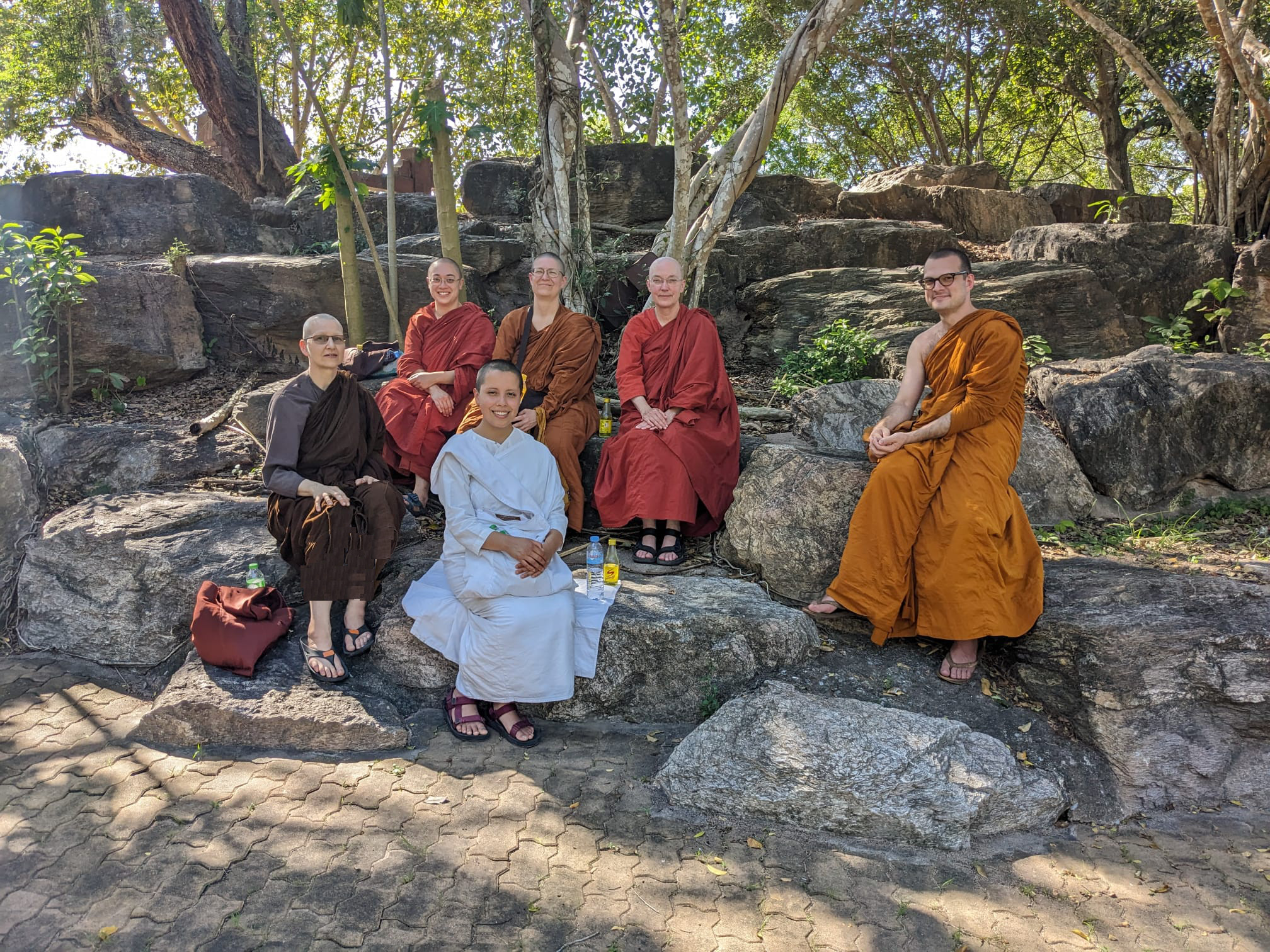Before starting the second half of the tour, here is a picture for the Patimokkha recitation. We had four bhikkhunis at Wat Pah Subthawee Dhammaram including Ayya Camala from Malaysia. Ayya Cittananda took the picture so it is just Ayya Santussika, Ayya Camala and I in the photo.

The second half of our Thailand trip started at Wat Saengdhamm where we visited the Chedi in honor of Luang Pu Mahabua Yanasampanno

and then got an interview with Ajahn Sopa. The other monastics in our traveling group were Ayya Santussika, Ayya Cittananda, Venerable Viveka, and Anagarika Sarana.

Ajahn Sopa focused on meditation and forest style renunciation. Where the interview was, there was a forest monastery flavor. The wood burning heating of water for the monastery was next to the reception area. We learned that the monks took turns serving in reception, fire wood making, and forest seclusion. The Karuna Buddhist Vihara group had many questions and Ajahn Sopa eventually stopped us, indicating that the practice itself would answer, and sent us off to practice.
For the second half of the trip we staying in hotels and mostly ate at food courts and some restaurants, although occasionally we just ate in the vans en-route to appointments with the senior bhikkhus. Meeting these deeply knowledgable teachers was the main point of the trip. We were well nourished every day in every way.

The second day out we went to visit Ajan Anan and to practice at Wat Marpjan. The day was very hot and for the first hour of practice I tried not to nod off in the Kuan Yin temple under the whir of fans. After a coffee laced chocolate and water boost, the next couple of hours I instead spent sitting and walking outside in the shade.

The next day we had some meditation time at Wat Amperwan, but since Ajahn Jundee was away we were unable to meet with a senior bhikkhu that day. Both the outdoor sitting area and the temple felt peaceful and invited meditation.

The next day we switched hotels and met up with Tan Alex, a former Karuna Buddhist Vihara attendee turned monastic. That day and the next we visited museums, monuments, and monastic dwellings that were at or near Wat Yan Nasangwararam.

This monastery is interesting for its having both a cultural and ceremonial area easily accessible by the wider community and dwellings up the mountain form forest dwelling monks.

Our second day in the area we met with Ajahn Suchart, who spoke fluent English and answered the groups questions without a translator. He spoke about meditation practice and about practicing in daily life with much emphasis on how living in seclusion was a support for deepening.

After the question period he asked Tan Alex to show us a kuti as an example of where the forest dwelling monks spend most of their day. The walls of the kuti are old robes.

Along the way we met very large deer who were unperturbed by our presence in their forest.

The next day we checked out of the second hotel and went to meet Ajahn Piak and practice at Wat Pah Cittabhavana before going to our third and final hotel in Bangkok.

Ajahn Piak answered questions and gave a Dhamma talk in Thai of which we got a partial translation.
The parts of the interviews and talks that were recorded for our group through out the trip will be translated more fully later and I know they will continue to nourish my practice for much time to come.
Until then, I just hold the sense that the Dhamma is unfolding and that I have good and valuable things I can do to continue on the path. Meeting these teachers and traveling with such wonderful Dhamma companions has been a post-Vassa highlight.
Some of us went for the evening meditation until 10 pm at Wat Pah Cittabhavana. If you look closely at the picture you will find a real duck in meditation too.

In the last two days we saw some of the Buddhist sites and shops of Bangkok, including the 52 Bhikkhunis temple where we completed a forgiveness ceremony and many of the lay people returned to five precepts.

This trip was good for my heart. I feel even more sure that being in robes is the very best way I could be practicing.

At the airport, a bhikkhu asked if I was in robes for life, which I took to be asking if I was a temporary monk. I told him, “Yes, for life. It seems the best container to be practicing for happiness.” He nodded in agreement.

